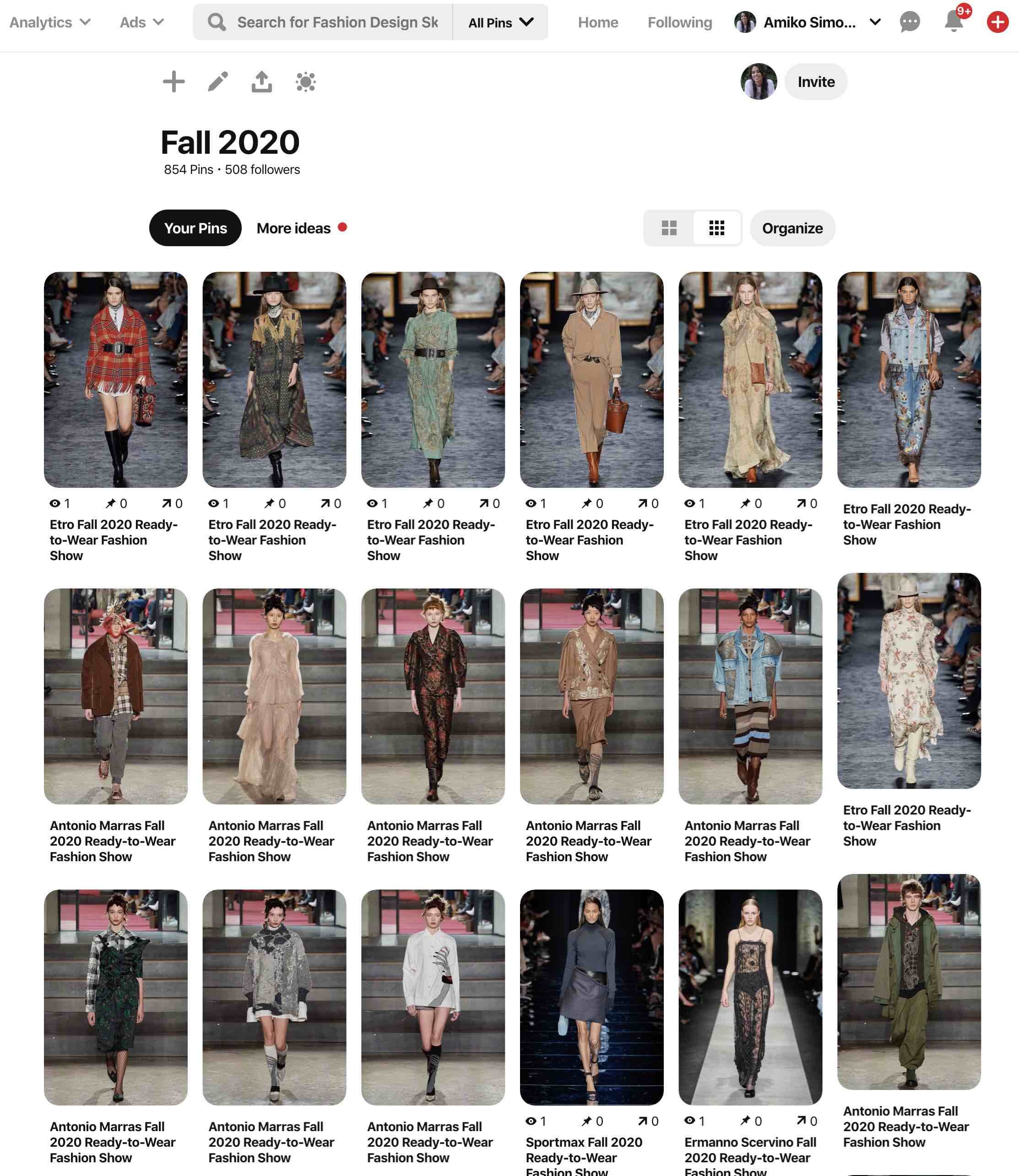How to Learn About Fashion Trends
In addition to designing clothes, I'm also a concept consultant. I identify key trends predicted to be relevant to a brand.
I'm going to share my exact strategy to do this.
Before we get into the actual strategy, let's first talk about why trend forecasting is important...
It can sometimes take a full year for a design to get sampled, fit, tested, produced, and shipped to stores. Because of this time delay, fashion designers have to predict which ideas will be appetizing to people in the future.
When I say "people," I mean "target customers." Remember, not all trends are relevant to your brand and customer. It's essential to understand the identity of your customers and serve them with relatable products.
There are many ways to forecast trends but they all boil down to one skill: observation and pattern detection.
Fashion designers learn to observe and search for patterns in color, silhouette, print, etc. Sooner or later, it becomes a habit.
Let's get into methods I use to forecast trends…
Trickle-down effect
There is a trickle-down effect, where brands at the top of the fashion pyramid, likely influence brands at the bottom.
For example, a luxury ready-to-wear brand likely influences a contemporary brand, while a contemporary brand likely influences a commercial brand.
In my experience, brands are influenced the most by the next tier on the fashion pyramid. It's unlikely that a haute couture brand will influence a commercial brand since they aren’t as relatable.
Knowledge of one’s hierarchal relationship to other brands on the pyramid helps streamline research towards brands which are most influential. (The brands on the same pyramid tier are "competitive" brands and brands directly above you are "aspirational" brands.)
To learn more about market categories on the fashion pyramid, read this article.
Fashion Week
In my experience, the best overall trend research strategy is to watch online coverage of designer shows during fashion week.
Fall fashion week for women's shows is in February, and Spring fashion week is in September. During those months, I comb through hundreds of shows on vogue.com, scanning for patterns in design and details, and bookmarking trends that are relevant to my brand and customer. I either save images to a board on Pinterest, or to my computer, where I then assign tags.
You can also bookmark images within the vogue.com app.
After collecting images of ideas that are new, repetitive, and relevant to my brand or customer, I search for patterns, take notes, and make a list of top trends.
Here is an example of research I did from Fall 2020 shows.
Vintage
The past tends to repeat itself in cycles.
Design elements usually group in decades. For example, the emergence of shoulder pads signifies that other 80s details like acid wash, high waisted jeans, neons, etc. are likely to trend in the marketplace.
Because of this, it's useful to understand the quintessential "look" or design elements of each decade. Check out this post: Fashion History: A Photo Collage Journey from 1920-1980
Vintage shopping is a great way to become familiar with different decades and source design inspiration. There are numerous online shops selling vintage clothing like Etsy and eBay (more recommendations below.) Even your local thrift store may have some gems.
thevintagetwin.com
rustyzipper.com
ebay.com shop by category > fashion > vintage ragstock.com
beyondretro.com
On some of these vintage websites, like beyondretro.com. you can search product by decade.
Streetwear + Counter Culture
We talked about the "trickle-down" influence of aspirational brands, but there is also a "trickle-up effect" from streetwear and counter-culture.
It's not just haute couture and ready-to-wear fashion houses calling the shots. Often, ideas generate from music, art, and culture.
Websites like https://coolhunting.com/ and even social media can help you stay connected to what's happening in the world.
Google Trends
Google trends is a tool to track search volume for certain key words over time. You can search by keyword, date range, and location.
Here’s an example of a search I did for search volume for “Skinny Jeans” from 2005-present. As you can see below, the online search for “Skinny Jeans” peaked in 2009, and has leveled out since then.
Correlations
You can also use Google trends to search correlations between search words. For example, "cropped top" has a trend correlation to "high-waisted."
The explanation is logical. People need high-waisted jeans to accommodate the shortened length of cropped tops.
Often, trends emerge logically or as a way to compensate or "even-out" a proportion. If cropped pants are trending, so may higher-ankle boots. If pants are becoming more voluminous, shirts may get smaller to even out the proportion.
Fashion Trend Cycles
Trends have different lifecycles. Some trends are fads that arise and disappear quickly. Some trends are slower to gain traction, but stick around for a long time.
By pinpointing where a trend is in it’s lifecycle, you can better predict when it will fizzle out.
The goal is to send product to market before a trend is declining or, worse, obsolete. It’s brand damaging to represent a product that is over-exposed in the market.
This article explains more about fashion trend cycles.
What’s your Strategy?
If you have a strategy that’s worked for you to forecast trends, please share in the comment section!





